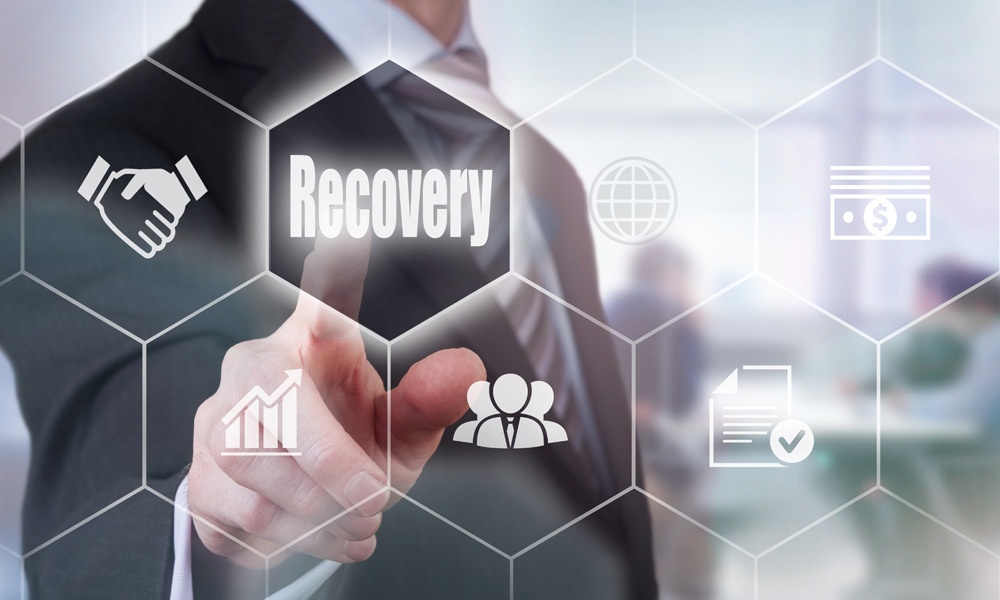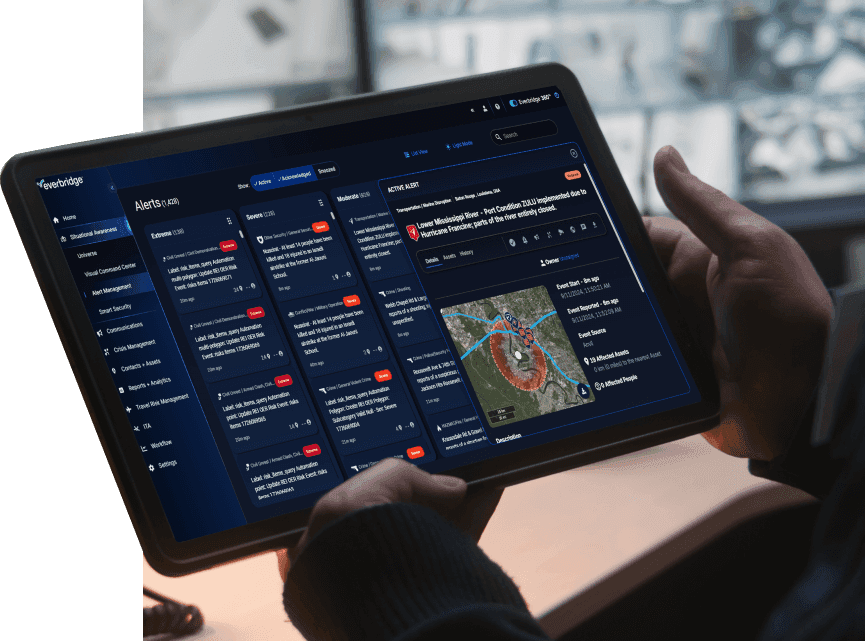When unexpected disasters strike, they can bring businesses to a grinding halt, causing severe financial losses, damaging customer trust, and disrupting operations. From cyberattacks to natural disasters, no organization is immune to such risks. However, having a robust disaster recovery plan (DRP) in place can make all the difference in mitigating damage and ensuring your organization’s continuity.
This comprehensive guide will walk you through the essentials of creating an effective disaster recovery plan. It will help you safeguard your business operations and recover swiftly when the unexpected happens.
What is disaster recovery?
Disaster recovery is the process of restoring business operations following a disruption. Disaster recovery comprises a set of policies or procedures designed to ensure effective communication during the event and facilitate the return to normal operations, the recovery of IT systems, and the restoration of uptime for mission-critical applications.
Compared with business continuity (BC), disaster recovery differs in that it is a component of the BC program. A BC program encompasses multiple plans to maintain business operations before, during, and after an event. The goal of disaster recovery is to keep operations running as smoothly as possible during an event and resume them with minimal downtime after an interruption.
What is a disaster recovery plan?
A disaster recovery plan (DRP) is a structured document outlining the procedures, tools, and policies an organization needs to respond to a disaster, minimize impact, and resume normal operations as efficiently as possible. These disasters can range from natural disasters like hurricanes and floods to human-made crises such as cyberattacks, power outages, and software failures.
Even minor disruptions can have far-reaching consequences for businesses. For example, IT downtime alone costs organizations an average of $9,000 per minute, according to research. For large enterprises like finance and healthcare, these costs can escalate to a staggering $5 million per hour in certain scenarios.
The recent case of the 2024 CrowdStrike IT outage underscored the importance of disaster recovery. This event has been labeled as the largest IT outage in history, causing global disruption and resulting in more than $5 billion in direct losses for Fortune 500 companies.
Similarly, natural disasters, like Hurricane Idalia in 2023, brought widespread destruction in Florida, costing billions of dollars and highlighting the vulnerability of businesses to uncontrollable forces. Whether the issue is technological, environmental, or operational, a well-prepared DRP is critical to reducing downtime and disruptions.
Business continuity vs. disaster recovery
Use the table below as a guide to understand the main differences between business continuity and disaster recovery:
| How BC and DR Differ | Business Continuity | Disaster Recovery |
| Objective | Holistically finds potential threats to an organization and the impacts on business operations that those threats, if realized, might cause | Determine critical applications, hardware, and infrastructure required to return an enterprise to optimal function |
| When Triggered | BC plans are made in anticipation of a business interruption and activated when that occurs | DR occurs in parallel or in some cases before a BC plan is initiated. In many cases, infrastructure needs to be restored prior to the business restoration |
| Milestones | BC milestones are determined by each business segment (marketing, fabrication, IT) and are driven by RTOs | Pre-established recovery times based on impact tolerance provide the framework for return to customary conditions |
| Ongoing | BC plans are reviewed regularly for revisions driven by new key personnel, new corporate objectives, new equipment, and any other significant change. BC plans should be tested annually or when there have been material changes to the organization | Holistically finds potential threats to an organization and the impacts on business operations that those threats, if realized, might cause |
| Span | Holistically finds potential threats to an organization and the impacts on business operations those threats, if realized, might cause | Shows recovery order based on impact tolerances |
| Characteristic | Proactive | Reactive |
Business continuity plan vs disaster recovery plan
Now you know the difference between BC and DR, you need to understand the difference in planning. It’s easy to conflate disaster recovery plans with business continuity plans (BCPs), but they serve distinct purposes that complement each other:
- Business Continuity Plan (BCP): This overarching strategy ensures smooth business operations before, during, and after a disaster by incorporating various sub-plans into one comprehensive document. It addresses all aspects of continuity, including staffing, communications, and operational processes.
- Disaster Recovery Plan (DRP): A subset of the BCP, the DRP specifically focuses on remediating and recovering from disasters as they occur. Disasters such as hurricanes, floods, wildfires, earthquakes, cyber-attacks, pandemics, and more. It emphasizes restoring IT systems, applications, and data with minimal downtime.
While a BCP ensures overall operational sustainability, a DRP zeroes in on the efficient restoration of critical systems and data.
Resilience and planning
BC and DR work to make organizations resilient. There are two types of resilience to consider: enterprise resilience and operational resilience.
Enterprise resilience is an organization’s ability to (1) plan, prepare, and understand risks and critical functions; (2) anticipate disruptions and potential downstream impacts; (3) respond in a coordinated, organized, and controlled manner; and (4) recover, adapt, and evolve to be able to manage challenges even more effectively in the future.
Operational resilience focuses on the functions of individual divisions or aspects of the business. Not every problem affects the entire organization, at least not at first. If weather problems keep parts from arriving at a production facility, sales, marketing, and other vital functions can continue. However, each of these pieces should be prepared to recover from problems unique to it, before they affect the entire operation.
How to build an effective disaster recovery plan
To prepare your business for the unexpected, follow these key steps to build a comprehensive disaster recovery plan:
1. Assess risks and threats
- Identify potential disaster scenarios, such as natural disasters, hardware failures, or cyberattacks.
- Conduct a thorough risk assessment to prioritize threats and assess their likelihood and potential impact.
2. Set recovery objectives
- Define Recovery Time Objectives (RTO) (maximum downtime your business can tolerate) and Recovery Point Objectives (RPO) (maximum acceptable data loss). This step ensures you have clear benchmarks for recovery.
3. Define roles and responsibilities
- Assign specific roles to team members responsible for executing the DRP. A clear chain of command minimizes confusion during high-stress situations. Ensure there are protocols for team member absences to maintain operations.
4. Develop emergency procedures
- Create step-by-step instructions for immediate actions when a disaster occurs.
- Establish a robust communication protocol to keep employees informed and safe.
5. Backup and recovery procedures
- Document methods for data backup, storage, and restoration. Use advanced tools like automatic backups and cloud storage for more reliable results.
6. Identify critical IT assets
- List essential IT assets, such as servers, networks, and applications. Prioritize these assets based on their importance to core operations.
7. Create a communication plan
- Develop strategies for keeping stakeholders informed during and after disasters. Clear and timely communication prevents misinformation and confusion. Include pre-written notifications and alerts delivered to the appropriate audience via email, text, overhead sound systems, mobile notifications, or phone calls. Prepare both internal and external communication plans.
8. Test and maintain the DRP
- Conduct regular testing of your plan through simulated drills and tabletop exercises. Testing identifies gaps and ensures the plan remains effective as your organization evolves.
9. Train employees
- Educate your team about their roles and responsibilities in the DRP. Regular training fosters confidence and preparedness.
10. Prepare a contingency plan
- Always have a Plan B. Ensure relevant stakeholders know how to adapt if the primary recovery strategy fails.
The importance of regular testing cannot be overstated. Testing uncovers flaws in the recovery strategy, allowing your organization to address potential weaknesses before a real disaster occurs.
Types of disaster recovery methods
Understanding the options available for disaster recovery can help you tailor a plan that meets your organization’s unique needs. Here are some common disaster recovery methods:
1. Backup and backup-as-a-service (BaaS)
- Regularly backs up data to secure locations, ensuring minimal data loss.
- BaaS solutions streamline backups by outsourcing the process to specialized providers.
2. Recovery as a service (RaaS)
- Outsourced recovery processes to third-party vendors who ensure uptime and operational continuity during disasters.
3. Virtualization
- Uses virtual servers to replicate and restore critical IT systems. This method allows organizations to test complex recoveries in a controlled environment.
4. Instant recovery
- This enables organizations to restore systems almost immediately after an outage.
5. Cold site
- A remote data center equipped with the basics for disaster recovery. It requires manual setup of the IT environment during a disaster.
6. Hot site
- A fully operational replica of your IT systems that is ready to take over operations instantly.
7. Datacenter disaster recovery
- Redundancy is built into data centers to mitigate risks in case of a hardware failure or breach.
8. Point-in-time copies
- Captures snapshots of data at specific moments to enable precise recovery for critical systems.
Moving forward with confidence
Disaster recovery planning is not just a document, it’s a critical business asset. With both the frequency and cost of disasters rising, organizations must prioritize preparation to safeguard operations, employees, and reputation. The ability to recover quickly from a disaster is not just an operational imperative but a competitive advantage.
If your organization does not have a disaster recovery plan in place, or if your existing plan needs an update, there’s no better time to take action. Start by assessing your current risks and gaps.
For more detailed information and tailored tools to create your DRP, explore our business continuity solutions.
Remember, being prepared today reduces the impact of tomorrow’s crises.

